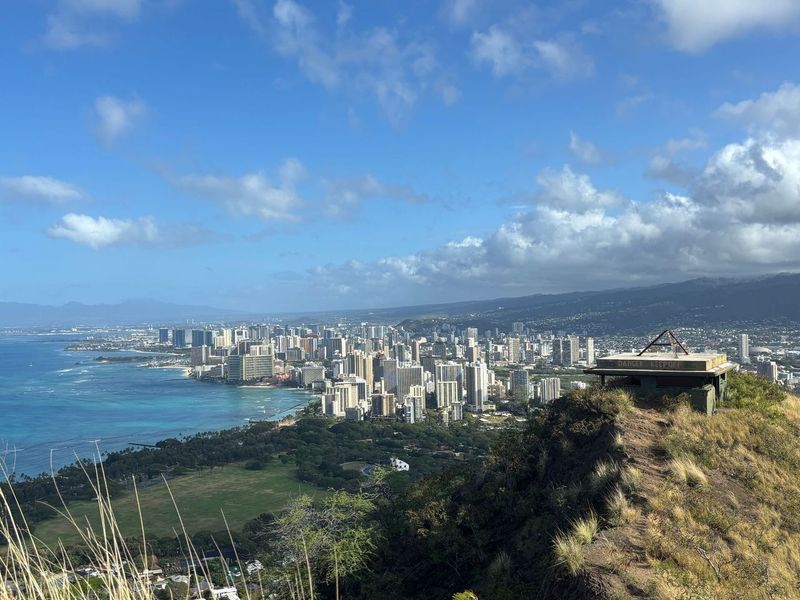Lē‘ahi (Diamond Head) is one of Hawaii’s most recognized landmarks, formed nearly 300,000 years ago during a single, explosive eruption. After the eruption, a saucer-shaped crater was formed as particles in the air settled and cemented together into tuff. Today, the Diamond Head Crater Summer Trail is one of Hawaii’s most visited hiking trails.
Before I visited Lē‘ahi, I wondered just how challenging this hike would be and how long it would take to hike up and back down. To my surprise, the hike was much easier and shorter than expected. You only need a short window of time in your day to enjoy the incredible views from this volcano.
How long did it take to hike Diamond Head Hawaii?

It didn’t take long for me to realize that most Hawaii residents are pretty active people. That being said, when a few locals told me that Diamond Head, Hawaii, was a short, easy hike, I took this information with a grain of salt. Yet, it turns out the locals were right — this hike won’t take as long as you think. From the time I left the car in the parking lot to the time I returned, the entire hike took only one hour to complete (and I’m a slow walker compared to most). Your time to complete the hike could vary depending on how much time you spend enjoying the views from the overlook at the top.
To visit the hike, you’ll need to book a reservation online (available in two-hour windows). The two-hour window reservation system threw my timing off, as I thought this meant it would take two hours to complete the trail. However, the reservation system is actually in place to control traffic through the trails, as it can get extremely busy.
Timing your visit

I chose to hike during the 8 a.m. to 10 a.m. slot on a weekend, and it was packed. While you can take all two hours to finish the hike, it’s unlikely you’ll need this much time. If you’re looking to avoid crowds, it may be worthwhile to arrive early and visit during the 6 a.m. to 8 a.m. time slot. A morning hike is not only perfect for ideal weather before it gets too hot, but it’s the perfect way to start the day. After my hike, I enjoyed a phenomenal brunch at Hau Tree as a post-hike treat (don’t skip out on the Ube cinnamon roll if you want to consume more calories than you just burned).
Requiring only about an hour to complete, Diamond Head Hawaii is the perfect hike to add to your Hawaii itinerary without taking up too much of your day. I appreciated that most of the trail was paved, making it less strenuous than some of the other hikes I did during my visit to Hawaii. For only an hour of your time, the views are more impressive than you’d expect. Not only is visiting here a must-do for photo opportunities and views, but it’s also a cultural and historical learning experience. Many Hawaiians value the significance of the Lē‘ahi (Diamond Head )National Monument. Today, preservation efforts are a crucial part of the community’s efforts to ensure the respect and recognition of this sacred, historical site.




